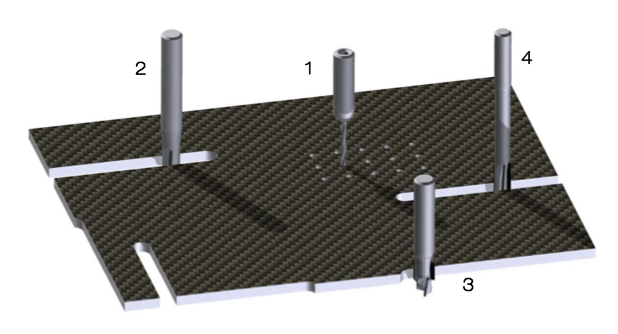Tooling for Cutting Composites
The use of composite materials has been on the rise for years due to their unique characteristics including reductions in weight and increased flexibility. By definition a composite is a combination of two other materials used to create a unique material that is superior to either input material (a super-material?). The performance increase makes composites more difficult to machine, however, selecting the proper tool for the application is paramount to optimizing tool performance. Each composite type comes a unique set of cutting challenges due to the materials structure which, unlike metal or wood, is composed of layers of fibers and resins bonded together with intense heat and/or pressure.
Due to structural differences, composites will behave differently based on the materials used in the creation of the composite, so when cutting a new material it’s important to do a test cut on scrap material. Cutting composites requires getting through the different layers of various material types by chipping, ripping or shredding. Common composites include carbon fiber or fiberglass layered and bonded by polymer resins such as epoxy and polyurethane. Each of these layers react differently when cut and the heat generated by the cutting tool can cause de-lamination or worse if not machined properly, leading to excessive tool wear and a change in tool geometry.
Diamond tipped (PCD) tools are often most effective in cutting composites as it’s important for the tool to cut with minimal force applied to the material. Composites will “eat” through solid carbide tools in many cases, so while the sticker shock of PCD may detour some people the cost per linear foot machined will be drastically decreased when compared with solid carbide.
With drilling composites, splintering can be an issue, so using PCD tools is especially important as a dull bit will lead to layers being pushed aside vs being cut. This leads to de-lamination or “blow-out” on the exit side of the material. With a new material it’s best to test the characteristics prior to machining any large project as the observable properties will be important in finding the right RPM/feed rate to optimize cut quality.

The example carbon fiber tools used:
1 Diamond-Dowel Drill
2 DIATEC-4 Diamond Router Cutter
3 DIATEC Diamond Cutter w/ Alternate Shear Angle
4 DIATEC-4-Quattor Diamond Router Cutter
For more information on application specific composite tooling contact us today so we can discuss your exact needs.
